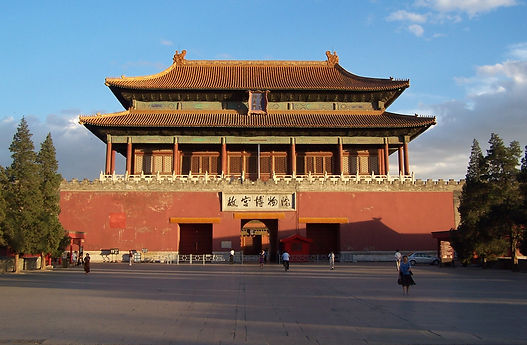




A Brief History
Your Home for everything Ancient China
The Great Wall of China, one of the 7 Ancient Wonders of the World, was finished construction in 206 BC. It was originally multiple walls, used during the Warring States period to defend from Mongolian invasions along the Eurasia Steppe. But later when the states unified to what would later become Modern China, so was the wall.


The Forbidden City was the imperial palace for dynasties from the Ming Dynasty to the Qing Dynasty (or from 1420 to 1912). It was constructed in 1406, to house the future dynasties. The complex consists of 980 rooms and it is currently the largest Palace Museum.
The Li River, also known as Guangxi, is a river that flows for 83 km from Guilin to Yangshuo. This river is famous for its Li River cruise.


Huangshan, better known as the Yellow Mountains, is a mountain range in southern Anhui province in Eastern China. Its highest point is 1,864 m from sea level. It is also one of the destinations on The World Heritage List and is one of China's most popular tourist destinations.
The religion Buddhism was founded in sixth century BCE, by a man named Siddharta Gautama (born 563 BCE), who would later be named the Buddha. He gave up all pleasures (like lust, happiness and taste) and persued enlightenment. He practised and taught Buddhism, and is now known as a sort of God.


Confucius (551-479 BCE) was a Chinese teacher, politician and philospher in the mid-late 16th Century BCE. He taught that rulers should lead by example and family duty. One of his closest students would later share his teachings to the later ages and would create a religion named after its inspiration, Confucianism.
Laozi (5th/6th Century BC - 531 BC) was an ancient Chinese philosopher and writer. He was both the founder and deity to a religion later known as Taoism. There is a little bit of mystery surrounding what time he lived in China, as some sources say that he lived around to the time of Confucius (6th Century BC), whereas others say he lived during the Warring States period (5th/4th Century BC).


In early 3rd Century BC, China figured out how to refine food like vinegar and soy sauce using fermentation and distillation, which would later turn into the alcoholic spirits-making process we'd know today.
The world's first clock was invented by Yi Xing (618-907), a Buddhist monk and mathematician. The mechanism was configured so that continuous water driplets would turn a wheel one full revoloution every 24 hours.


In 4th Century Bc, the kite was invented, which over many interperatations, these kites were able to carry a grown man (late 6th Century AD). Finally, somebody tested what would happen if you removed the strings.
Ancient China has come up with hundreds of brilliant inventions that we still use to this day. They came as simple as paper, and as complicated as the mechanical clock. They provided China with such great attractions that bring millions of tourists a year.
